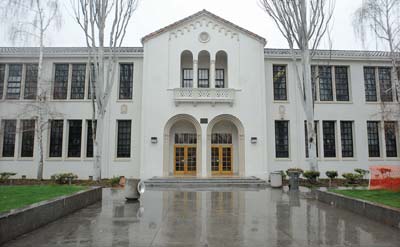While leaders can always improve on considerations of ethnicity in schools, San Benito High School Trustee Raymond Rodriguez took a superfluous leap in contending differing drug-awareness presentations – one in English, the other in Spanish – were a reflection of institutional racism.
Rodriguez stirred the debate after the high school held a Drug Awareness Night event on campus in February. Sometime last year, the school’s Migrant Parent Advisory Committee had requested permission for a presentation of its own on drugs and gangs. The two programs – the high school and county probation department partnered on the Drug Awareness Night presentation in English – were held on the same night. Rodriguez attended parts of the coinciding presentations and was upset because at the start of the Drug Awareness Night program, attendees were instructed they could see the same program in Spanish – the one put on by the migrant parents – in another area of the campus. He called out the district for a “hidden message” and referred to it as institutional racism.
More than anything, the debate underscores the importance to continually examine school procedures to ensure there is equality throughout the district community. To an extent, Rodriguez is on the right path: The district – along with most others perpetually faced with decisions potentially affecting race relations and perceptions about them – should always keep a close eye on how it treats students and how people might interpret the school’s actions. In retrospect, it appears the district should have displayed heightened sensitivity about hosting two similar – yet poignantly differing – presentations on the same subject matter. It opens the door for criticism – especially when race is involved, directly or indirectly.
The district also sold itself short by limiting its own presentation to the physiology of drugs. Why not include everyone in the discussion about gangs, which often correlate with drug use and dealing? Incidentally, the parents who speak only English and watched the Drug Awareness Night presentation missed out the most. Those families – no matter the race – were pigeonholed into a narrow discussion and, thus, missed an opportunity to learn about identifying signs that their children might be in gangs.
It is fair to critique such procedures and provide solutions to potentially improve race relations and equality – Rodriguez provided none, other than pronouncing that others’ perceptions must change. To claim racism over independently coordinated programs is overly accusatory and does nothing but spur groundless resentment.










